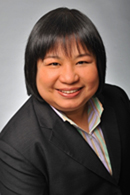 By Sara Canaday
By Sara Canaday
In July, I had the privilege of delivering a keynote speech to 500 incredibly talented professionals at Working Mother Media’s annual Multicultural Women’s National Conference in New York City. As I took the stage on the first morning and began to share my story, I was struck by the remarkable vibe in the room. These women weren’t just present; they were fully engaged. I was surrounded by current and emerging leaders representing a wide range of industries, ages and cultures, and they were all totally plugged in. The message was genuinely resonating with them.
The theme of the conference was “Vision & Impact: Charting What’s Next.” My work in the area of leadership and development has always focused on the importance of our impact in the workplace. Credentials and years of experience aside, our real career success is driven by how we work with and through other people – how we lead them, collaborate with them, interact with them, and react to them. When we manage that impact and ensure that others experience us in the way we intend, we can accelerate the pace of our professional trajectories.
Here’s the problem… Many times, there’s a hidden gap between what we see and what those around us see. When there’s an impact disconnect (even a very subtle one), our careers can be inadvertently derailed while we are left wondering what went wrong. I call those disconnects professional blind spots. Despite our best intentions, these blind spots may be holding us back or preventing us from reaching our full potential.
Think about your co-workers. Do you know someone who is generally smart, hard working and well intentioned, but still manages to rub people the wrong way? There’s a fine line between decisive and abrupt. Between passionate and overzealous. Between meticulous and annoyingly nit-picky. Between innovative and rebellious. These people might have great resumes, but blind spots are likely the reason they are getting overlooked for promotions or high-visibility assignments. Their intended impact on others doesn’t match up with the actual impact they deliver. Subtle behaviors and unconscious habits are sabotaging their success, and they simply can’t see it.
Quite a few women approached me after my presentation to recount fascinating stories about people in their organizations who were clearly struggling with professional blind spots. Surprisingly, quite a few of these people were bold enough to describe their own “a-ha! moments,” identifying blind spots they never before acknowledged but now see as the culprit behind some of their past career missteps. These women all seemed to understand that everyone suffers from blind spots, but those who end up in the boardroom or the corner office have just learned how to manage them better.
I challenged the conference attendees that day to move beyond their resumes as they thought about achieving their professional goals. I asked them to focus on the impact they have on others, ensuring their intentions were translating into reality. I gave them three ways to do that, and I’d like to share those with you as well.
First, increase your self-awareness. Be honest about your natural tendencies and habits when you interact with others. How do your colleagues feel about working with you? Ideally, how would you like them to feel? Eliminating blind spots certainly isn’t about changing who you are, but about understanding yourself and making conscious adjustments to improve your impact on others.
Second, get specific feedback from your co-workers to find out how you are really perceived. This process might be a bit uncomfortable, but it’s absolutely critical to help uncover any blind spots that could be slowing down your career progress. Besides that, getting feedback will also point out your strengths and the distinguishing qualities that set you apart. If you’ve had trouble defining your value proposition, this exercise can give you amazing clarity. You can gather feedback using a wide range of methods, from formal reviews with your manager to casual conversations with peers. Online surveys are another excellent option. For corporate clients and students in my virtual Career Acceleration Academy, I provide access to my Brand 360 Survey. This easy, online tool allows them to gather rich, anonymous feedback from a select group of colleagues.
Third, compare your ideal impact with the actual impact you discovered by gathering feedback. Look closely at the areas where you are right on target for strengths you can further leverage. Any areas with gaps represent your own professional blind spots. Armed with that knowledge, you can work to close those gaps and actively improve the impact you have on others. Simply being aware of your blind spots and unique differentiators will help you make the small changes that can make a big difference in your career success.
As women, many of us have an innate gift for intuition and emotional intelligence. Research proves that we are “wired” over several thousand years for greater empathy and stronger communication skills. I firmly believe these qualities give us a huge advantage in the workplace when it comes to uncovering and eliminating our professional blind spots. We can use that capacity to improve the way we impact others, to fuel our career progress, and to create greater business success. This nugget of insight truly resonated with the women attending the recent conference, and I sincerely hope it does the same for you.
Sara Canaday (www.SaraCanaday.com) is a nationally recognized leadership expert, corporate speaker and owner of Sara Canaday & Associates, a consulting firm based in Austin, Texas. Sara is also a resource partner of www.theglasshammer.com and to help conference attendees use a systematic, quantifiable approach to improving their business impact, Sara offered an exclusive discount on her popular online course, the Career Acceleration Academy, including her Brand 360 Survey. For a limited time, Sara wants to extend that same offer to Glass Hammer readers. To register and get more details, please visit CareerAccelerationAcademy.com. Use Code GH001.








